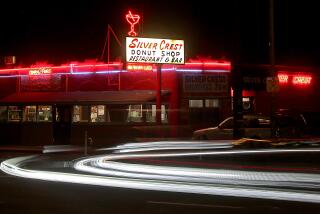Frontlines of a food revolution
The sap is running on a crisp spring morning — sugar maples along the roads are festooned with every manner of container, from gallon milk jugs to shining buckets. Steam and smoke waft upward from jury-rigged sugar shacks and multiroom log sugar houses worthy of a spread in Architectural Digest. This variety is typical across the country — the small producer’s next-door neighbor might be a multimillion-dollar producer.
But beneath the bucolic image, there are questions. The artisanal food movement has added delicious, high-quality food to the national palate, but how does it affect the communities in which it is produced? What happens when artisanal products become too expensive for regular folks, the people who have always enjoyed them?
Here are some more: What does it mean when much of the food is shipped far away to New York, Boston, San Francisco and Los Angeles? Artisanal food is regional, local food. How big can an artisanal company get before it is too big, expanding beyond the ability of the region to sustain it?
Ben Hewitt set out to answer those questions in his new book, “The Town That Food Saved,” using his hometown of Hardwick, Vt., population 3,200, as his petri dish. Hardwick is home to several artisanal companies, one of the oldest food co-ops in Vermont and one of the region’s finest gourmet organic restaurants, Claire’s.
But where there is good food there is discussion, often argument. By asking these questions, Hewitt put himself, with little forethought and no malice, into the center of his community’s — and the nation’s — raging food debates.
When Hewitt was growing up in northern Vermont in the 1960s and ‘70s, Hardwick had a reputation as a depressed ghost town. It had enjoyed a brief heyday in the early 1900s when everyone wanted to build with the plentiful local granite. Bust followed boom and then in the 1960s and ‘70s came the back-to-the-landers, looking for inexpensive land to grow food and get off the grid. Some of these settlers started small companies that have become successful in the Artisanal Age. Today, Hardwick looks (with a little imagination) like a mini- Berkeley.
Hewitt’s book is more complicated than the title implies. In fact, Hewitt, who lost and made friends in the process of writing it, thinks the title doesn’t really do justice to the complicated story he unearthed.
He wanted to write the happy story — the colorful characters, the successful small companies, the hopeful alternative to Big Food and Big Distribution. But he also wanted to describe a replicable model, to think through what the guiding principles for a decentralized food system might be.
He came up with four rules: It must be economically viable to small-scale producers. It must be based on sunshine, i.e., not dependent on chemicals and petroleum. It must feed the locals as well as meet demand from other places. And it must be circular, meaning, for example, that the compost used to create healthy soil would come from the food eaten by people and animals in that community.
When Hewitt looked closely at his hometown, he saw some, but not all, of these principles in action.
Companies in and around Hardwick, such as High Mowing, which sells organic heirloom seeds; Vermont Soy, which makes soy milk and tofu; and cheese maker Jasper Hill Farm had created jobs, embraced organic food production, engaged in frequent trade and bartering (whey for compost, food for labor, meat for vegetables). They helped form a local food co-op (one of Vermont’s first and most successful) and purchase 15 acres near the center of town for an eco-industrial park and year-round farmers market. In short, Hardwick was your ideal food community.
But there were also problems. The businesses followed the same old business models — the same draining of local resources to make expensive foods for people in New York and San Francisco.
Some locals were concerned that the media interest in these businesses would bring more outsiders, along with gentrification, higher taxes and increased regulatory interest in lives lived largely off the grid.
Some complained about artisanal producers capitalizing on the Vermont name and acting as if they’d discovered food-producing techniques that local families had been quietly using for more than a hundred years.
Some believe, like Hewitt, that the current food distribution system is unsustainable (due in part to rising fuel costs) and that any good solution will involve not just local food sources but, as medieval as it may sound, a barter economy — a neighbor-to-neighbor food exchange that is not dependant on infrastructure or credit.
“The bigger a food source is, the more vulnerable it is going to be to the vagaries of the market — the costs of transportation, the costs of fertility, and the salaries of all those middlemen,” Hewitt says.
Hewitt says that it would be presumptuous of him to tell people to abandon the Big Food model, but he thinks we need a variety of choices and models for living and eating — from barter economy to Big Food.
He and his wife, Penny, and their sons — Fin, 8, and Rye, 5 — grow and slaughter all their own food. Just outside Hardwick, on 40 acres purchased in 1997 for $30,000, they raise pigs, sheep and a few cows, chickens, goats; tap trees for maple syrup; keep bees for honey; and have a greenhouse that gives them year-round vegetables.
The Hewitts built their house with the help of friends and neighbors. Their energy comes from wind, solar and wood sources. There is no mortgage, no debt (goods they can’t make themselves are traded for or paid for with cash).
Downtown Hardwick isn’t quite the mini-Berkeley some people claim, but it is colorful and lively. Claire’s serves delicious food, most of which comes from within a 15-mile radius. The bookstore has many shelves dedicated to food-growing, soil-tending and time-honored methods for sugaring, bee-keeping, cheese-making and bread-baking.
Still, Hewitt argues that the artisanal movement that created this energy isn’t sustainable. In fact, he dislikes that word, which he thinks has been co-opted by commercial interests. He prefers “resilient.”
Hardwick may have been lifted out of economic depression by the artisanal movement, but Hewitt feels that it has created income disparities and other problems in the community.
“It’s ironic that Hardwick is being held up as a successful example of a local food economy, because it’s not actually feeding the locals,” he says.
One of the problems is that the more successful these companies get, the bigger they get, and with that size comes greater income disparity. Right now, despite being fairly poor by most measures, Hardwick doesn’t really have obvious upper-, middle- and lower-class distinctions, Hewitt says. “There’s no ‘other side of the tracks.’ ”
But as these artisanal companies expand, he sees that changing.
Hewitt is clearly proud of Hardwick. But he has come to see it warts and all, and he believes the debates are critical in the evolution of a healthier food economy.
“It’s possible,” he says with a grin, “that food didn’t save this town. Maybe this town will help save food. And that means all of us, everyone. The world.”
More to Read
Eat your way across L.A.
Get our weekly Tasting Notes newsletter for reviews, news and more.
You may occasionally receive promotional content from the Los Angeles Times.






